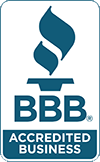 Our tech is something we use every day, but did you know it’s also the most disgusting? Your screen may look clean, but studies show that a mobile phone can be 18x dirtier than a public restroom – ew! It gets worse (sorry)…that keyboard you type at while eating your lunch? It’s probably the biggest bacterial threat in your home, with about 20,000 times more germs than a toilet seat, more if you share it with children.
Our tech is something we use every day, but did you know it’s also the most disgusting? Your screen may look clean, but studies show that a mobile phone can be 18x dirtier than a public restroom – ew! It gets worse (sorry)…that keyboard you type at while eating your lunch? It’s probably the biggest bacterial threat in your home, with about 20,000 times more germs than a toilet seat, more if you share it with children.
It’s not just sickness we’re up against, because as dust builds up inside our tech, it also slows down, malfunctions or overheats. Your devices essentially choke on ick, as vents and filters are clogged from sucking in pet hair and floating debris. Here’s how to clean your essential tech items without damaging them:
- Skip the household cleaners: Most cleaning products are too harsh for our technology and can end up causing permanent damage. You want something that can kill germs and remove everyday grime, without scratching or leaving behind a scented residue. Your best bet is Isopropyl Alcohol. You’ll find it in the first aid section of supermarkets and pharmacies, or at the hardware store.
- Power down completely:Turn your tech off all the way, not just sleeping, and unplug from any power sources. Switch wireless keyboards, mice, etc off underneath or remove the batteries.
- Remove any cases or covers:Undress your device as much as you can, but leave screen protectors on (unless there’s grime underneath). If your screen protector needs replacing, have a new one ready to apply.
- Grab a microfiber cloth:Dampen the cloth with Isopropyl Alcohol and wipe screens and external surfaces gently. Older build-up may require extra effort.
- Go deep:You can use a toothbrush or cotton tip swab to clean between most crevices, but some areas will need a bit more ‘oomph’ to clear. You’ve probably seen people use vacuum cleaners on their keyboard, but these are often TOO powerful and may suck keys or internal parts loose. They also generate damaging static electricity. Another option is to use a tech-specific vacuum, but these are usually underpowered.
Insider tip: Use a can of compressed air to blow the dust out. You can get these from many stores, and they come with a long nozzle so you can really get in and direct the pressure.
You’ll be surprised what flies out, so it’s best to do this outside! We don’t recommend using compressed air on your computer’s internal fans though, as this can make them spin too fast and damage them.
How often you clean your tech is up to you and your lifestyle. But it’s a good idea to blow out computer internal dust at least twice a year and - wiping your tech down 1-2 times per week will reduce germs and grime.
Coronavirus Update:
According to the CDC.gov/COVID-19 website, here are their recommendations for cleaning your electrical devices…
Electronics
- For electronics such as cell phones, tablets, touch screens, remote controls, and keyboards, remove visible contamination if present.
- Follow the manufacturer’s instructions for all cleaning and disinfection products.
- Consider use of wipeable covers for electronics.
- If no manufacturer guidance is available, consider the use of alcohol-based wipes or sprays containing at least 70% alcohol to disinfect touch screens. Dry surfaces thoroughly to avoid pooling of liquids.
The CDC has indicated that you need an alcohol solution of at least 70% in order to kill the Coronavirus, but is a higher percentage of alcohol, say 91%, better?
According to Dr. Elizabeth Scott, professor of microbiology at Simmons Center for Hygiene and Health in Home and Community, at Simmons University in Boston, “You would think alcohol solutions with a higher percentage would be more powerful at killing germs on your high-touch items like phones and doorknobs, right?
A lower percent-alcohol means there’s more water diluting the mix in the bottle. But according to microbiology, 70 percent alcohol is probably more effective than 91 percent for disinfecting—depending on what kind of germs you’re trying to kill.
Higher-percentage alcohols are more concentrated. That means lower percentages, like 70 percent, have more water in them. Turns out, the water is actually an important ingredient here.
Basically, a 90 or 91 percent alcohol solution is too powerful in some cases: It fries the outside of the cell before it can get into the inside and kill the actual germ. 70 percent alcohol is just the right proportion of water and alcohol to zap the entire cell.
Seventy percent alcohol has some water in it that allows it to cross a cell membrane, to really get into the bacteria to kill them,” Scott says.
The higher percentage alcohol solutions are harder on your skin, and more dangerous to your body.
Isopropyl alcohol (IPA) is readily absorbed through the skin, so using large amounts of IPA on the skin may cause accidental poisoning. Small amounts of IPA on the skin is generally not dangerous, but repeated skin exposure, like constantly disinfecting surfaces during this COVID-19 pandemic, can cause itching, redness, rash, drying, and cracking. Prolonged skin contact may cause corrosion.
So be careful, just put a little on the rag or cotton swab at a time and keep it off your skin as much as possible.





